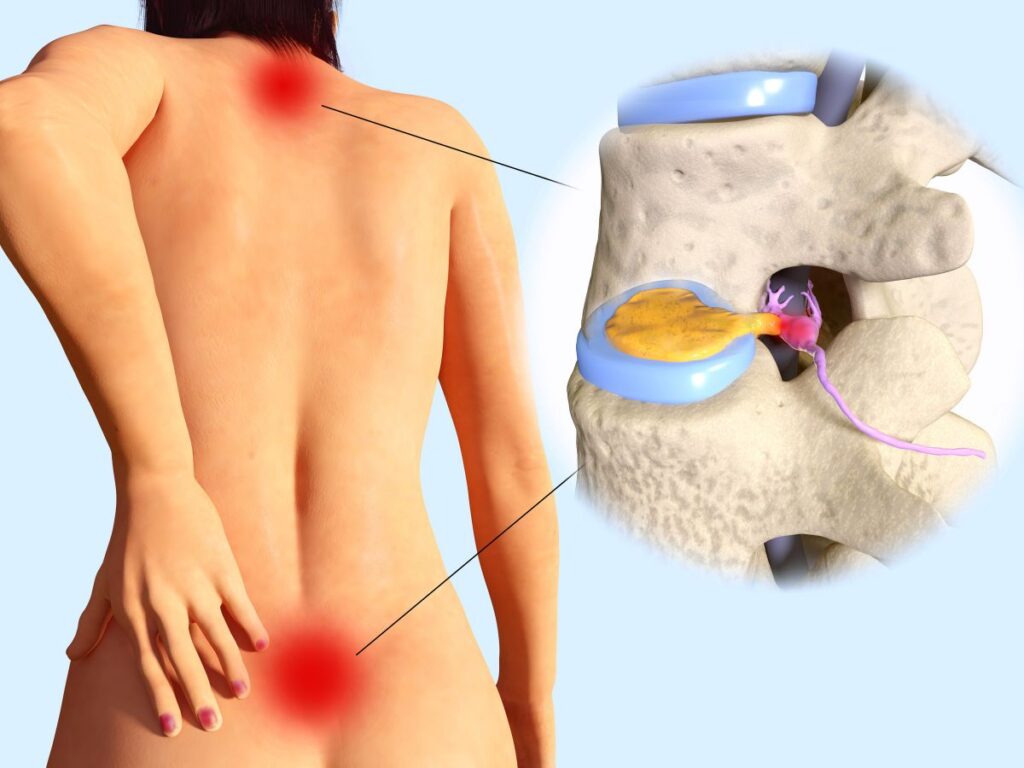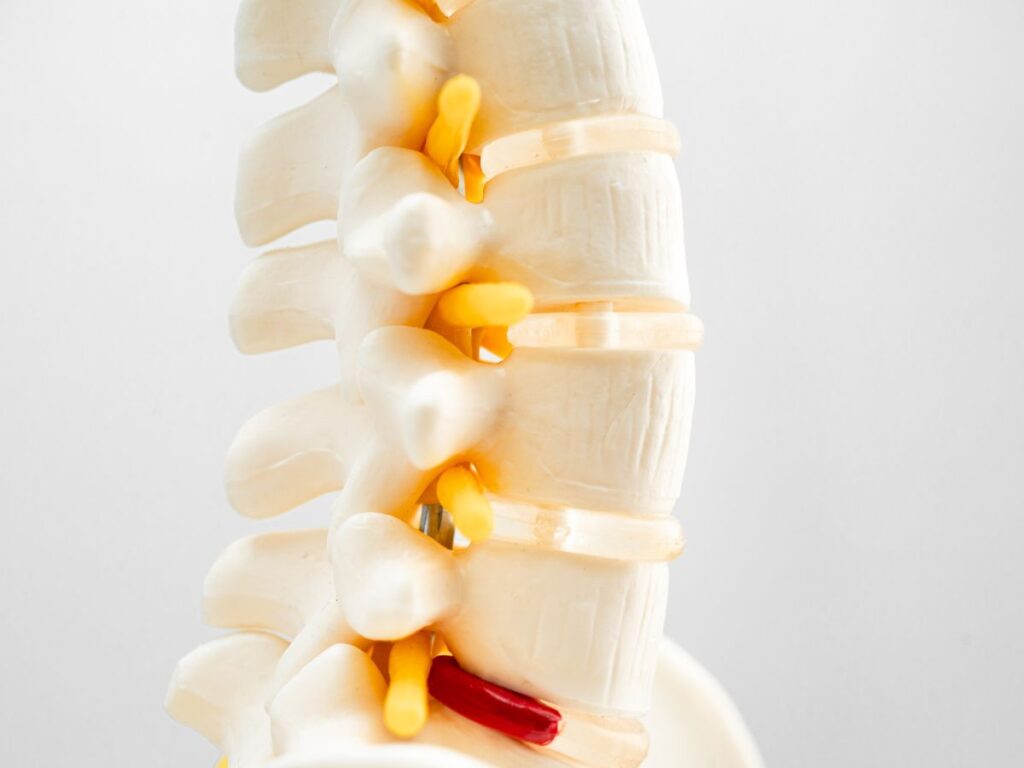Why Decompression Helps Radiating Pain
Sensations like numbness, tingling, or shooting pain into the arms or legs often signal nerve impingement at the spine. Discs that bulge or narrow spinal openings can trap nerve roots, creating distant symptoms known as radiculopathy. Spinal decompression therapy systematically draws vertebrae apart, reducing nerve compression by lowering intradiscal pressure. As nerve roots gain space, the arm or leg pain they transmit subsides. When integrated with Dr. Elham’s corrections and posture advice, decompression addresses the root mechanical stress, fostering real healing rather than masking symptoms. Ultimately, many find relief from that constant nerve zing that undermines daily activity.
Causes of Radiating Limb Pain
Herniated discs in the cervical region can spark arm or hand discomfort, while lumbar bulges typically cause leg or foot issues. Degenerative joint changes may pinch nerve canals. Poor posture—like prolonged forward head or slouched shoulders—tightens discs, further intensifying nerve friction. Accidents or strenuous lifting might aggravate spinal segments, releasing inflammation that triggers nerve signals along extended pathways. Decompression counters these mechanical tensions by slackening the vertebral segments pinching nerves, letting swollen tissues calm and discs reabsorb fluid crucial for shock absorption.
Decompression in Practice
Patients lie on a specialized traction table, harnessed according to whether the neck or lower back is targeted. The table then cycles through measured pulls and rests, stretching the spine gently. Dr. Elham calibrates angles to direct traction precisely at nerve-affecting levels—such as C5-C6 for arm radiculopathy or L4-L5 for leg sciatica. These controlled expansions decrease disc bulging or canal narrowing, diminishing the nerve root irritation that travels to distant limbs. Over successive sessions, the nerve corridor remains freer, allowing symptoms like numbness, burning, or electrical shocks to progressively fade.
Dr. Elham’s Holistic Model
Dr. Elham recognizes that nerves can be compressed not just by discs but also by misaligned vertebrae, posture distortions, or muscle imbalances. After traction, he may adjust the spine to fortify correct alignment, ensuring the nerve root can’t be easily re-pinched. If upper-body posture triggers arm numbness, scapular retraction drills or chin tucks may follow. For leg radiculopathy, hamstring stretches or core exercises keep the lumbar segments stable. This synergy cements decompression’s results, allowing nerves newly liberated from compression to remain free as you return to normal motion or mild workouts.
Leading Advantages for Radiating Pain
Adopting spinal decompression to handle limb pain boasts several gains:
- Direct Nerve Relief: Decreasing disc compression halts the chain reaction sending pain signals down arms or legs.
- Safe, Noninvasive Approach: It spares patients surgical incisions, anesthesia risks, or heavy medication reliance.
- Better Limb Function: Freed nerves restore muscle strength and sensation, limiting weakness or numbness in hands or feet.
- Versatility: It addresses both cervical and lumbar radiculopathy by adjusting traction angles.
- Longevity of Results: Combined with posture corrections, traction fosters lasting nerve decompression instead of fleeting relief.
Over repeated sessions, the torment of radiating nerve pain recedes, replaced by healthy nerve conduction that supports daily tasks and an active lifestyle.
Maintaining Progress at Home
Between decompression appointments, Dr. Elham often recommends posture checks—like avoiding severe forward head tilt when texting or balancing weight evenly while standing. Mild strength exercises—planks or bird dogs—fortify the spine’s support system, diminishing nerve stress. If you sit often, an ergonomic chair or lumbar roll can reduce disc compression. Gentle nerve glides (like stretching the arm or leg nerves under careful instructions) prevent scar tissue or muscle tightness from reimpinging the nerve root. Through these proactive measures, you safeguard decompression’s strides, keeping nerve aggravation from creeping back into daily activities.
Activity Reclamation
Shooting pain or numbness in limbs can sabotage tasks from typing and cooking to jogging or cycling. Decompression alleviates the root nerve compression, letting you reclaim these motions without the dread of pins-and-needles or sharp stabs. Dr. Elham checks how you move, suggesting micro-breaks or alignment tweaks if your daily chores or workouts risk overcompressing the nerve. As traction sessions accumulate, limb strength and sensation often improve, returning you to the sports, hobbies, or basic chores once sidelined by nerve entrapment.
Downsides of Dismissing Radiating Pain
Left untreated, nerve compression can intensify. Fingers or toes might become perpetually numb or weak, complicating fine motor skills or stable walking. Chronic radicular pain hampers mood, sleep, and productivity, while posture compensations risk additional spine or joint issues. In extreme cases, permanent nerve damage can arise, demanding surgical decompression. By engaging in spinal decompression early, you halt these spirals, fostering nerve recovery through mechanical relief and circumventing invasive interventions that carry increased complexity and risk.
Decompression Session Basics
After discussing arm or leg pain patterns, Dr. Elham positions you on the table, harnessed around the neck or lower back region. A computerized system applies controlled traction, then relaxes, repeating in cycles for roughly 15-30 minutes. The stretch often feels more like a mild elongation than an aggressive pull. Post-therapy, Dr. Elham might adjust spinal segments or suggest short walks to stabilize the fresh disc spacing. Over a course of 10-20 sessions, nerve tension abates substantially, letting numbness or zapping sensations diminish, replaced by normal, comfortable limb function.
Paving a Pain-Free Path
Spinal decompression for radiating arm or leg pain tackles nerve impingement at its source. As disc compression eases, neural pathways reopen, banishing numbness and regaining full strength or sensation in the extremities. Dr. Elham’s integrated lens ensures posture alignment, muscle rebalancing, and stress management support each traction cycle, so nerve decompression endures outside the clinic. Over weeks, patients typically rediscover their ability to grip objects firmly or stride without shooting jolts. Free from relentless nerve distress, you can restore an active routine—whether that’s playing sports, handling detailed tasks, or simply living everyday life unburdened by nerve-induced pain.






